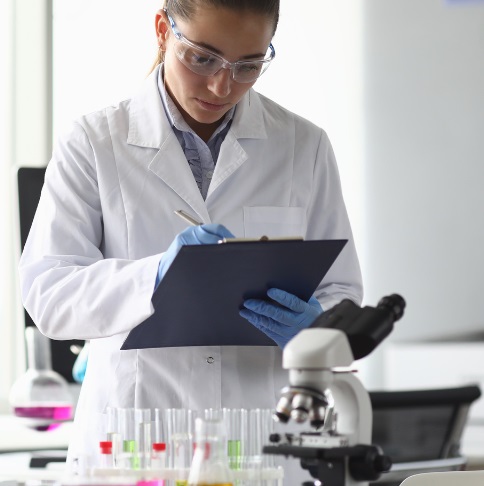Adolescence is a stage of life in which enormous physical, cognitive and emotional development takes place. It is a period of learning, self-knowledge, the search for novelty, intense feelings and changes in brain functions and structures. All these factors are of great importance for the development of identity and personal autonomy, however, they also make adolescence a critical stage in which mental health problems can begin to develop and lead to disorders such as self-harm.
According to the World Health Organisation (WHO), between 10-20% of adolescents worldwide experience a mental disorder and, in half of the cases, these begin at the age of 14 or earlier.
The most common mental health disorders in adolescents are: anxiety; depression and mood disorders; attention deficit and behavioural disorders; eating disorders; and psychosis. Unfortunately, mental health problems in adolescents are often undetected and untreated, with consequences that extend throughout their lives. This lack of adequate detection and intervention can end up seriously affecting their mental wellbeing and can lead to harmful behaviours such as self-harm or even, in some cases, suicide.
What are non-suicidal self-harm?
Non-suicidal self-harm (NSA) are behaviours of direct and deliberate destruction of the body without suicidal intent. That is, they are behaviours that involve self-inflicted bodily harm without the intention of causing death. SSA has become a serious problem among adolescents with an estimated prevalence of 17-18%, of whom 70-93% have at least 3 episodes of recidivism.
Non-suicidal self-harm has always been highly prevalent among young people with severe mental illness. What is new is that, in recent years, its incidence has been increasingly observed in adolescents with no previous diagnosis of any psychiatric pathology. However, this does not mean that the boys and girls who undergo them are not suffering from significant psychological difficulties, quite the contrary.
Why do adolescents self-harm?
First and foremost, it should be made clear that self-harm should never be seen as a way for the adolescent to «get attention», but rather, in any case, as a way of trying to ask for help, because they really need it. The mission of families and health professionals is to help them learn to cope with their difficulties in a different way and to replace these self-injurious behaviours with more adaptive ones.
In many cases SSAs seek to alleviate their distress and may be an attempt to achieve the following:
- Managing or reducing extreme emotional distress or anxiety and providing a sense of relief
- Distracting from painful emotions through physical pain
- Feeling control over one’s own body, feelings or life situations
- Feeling something (anything), even if it is physical pain, when the person feels empty emotionally
- Communicating feelings of stress or depression to the outside world.
- Punishing oneself. For example, adolescents with eating disorders engage in self-harm to relieve guilt about eating, vomiting or causing harm to their parents.
While self-harm may provide a brief sense of calm and relieve physical and emotional tension, it often results in guilt and shame afterwards, and the painful emotions tend to return.
What are the risk factors for self-harm?
Scientific evidence corroborates that adolescents are a highly vulnerable population to engage in non-suicidal self-injurious behaviour (NSA) in part because of the high emotional reactivity and impulsivity associated with this stage of life. Exposure to stressful events, combined with temperamental, genetic and environmental factors can precipitate the onset of SSA in adolescents.
Some of the risk factors that have been identified include the following:
- High emotional instability/neuroticism
- Tendency to impulsive behaviours
- A history of trauma, abuse in childhood
- Bullying
- A tendency to repress emotions along with few effective coping mechanisms to deal with emotional stress
- Feelings of isolation (this can be invisible in people who seem to have many friends/connections)
How to identify if an adolescent is self-harming?
ANS is usually not a suicide attempt, though. This type of self-harm is a very harmful way of coping with emotional pain, sadness, anger and stress. It can also have serious physical and psychological consequences in the long run, so it is important to be aware of the signs.
Symptoms of self-harm can include the following:
- Having scars, often in patterns
- Having recent cuts, scratches, bruises, bites or other injuries
- Excessive rubbing of an area to produce a burn
- Having sharp objects or other things on hand that are used for self-injury
- Wearing long sleeves or long trousers to hide self-injury, even in hot weather
- Making frequent reports of accidental injuries
- Having difficulty relating to others
- Exhibiting rapidly changing behaviours and emotions that are impulsive, intense and unexpected
- Talking about helplessness, hopelessness or worthlessness
However, it should be noted that there are gender differences related to the type of self-harm used. It has been shown that while girls are more likely to cut, scratch, and use methods involving bleeding, boys are more likely to hit and burn themselves.
Differences between self-harm and suicidal gestures
Non-suicidal self-harm (NSA) and suicide are two distinct entities. While self-harm responds to emotional states of intolerable anger, despair or distress, suicidal gestures are related to chronic thoughts of hopelessness. Thus, adolescents who engage in non-suicidal self-harm are often aware that their behaviour may cause serious injury. However, they do not consider these to be life-threatening. However, although adolescents who engage in SSA are not clearly suicidal, they are at a higher risk of a suicide attempt or suicide than adolescents without SSA, especially when repeated episodes of self-harm occur.
Suicide is among the top ten causes of death in adolescents and young adults worldwide. In Spain, it is the second leading cause of death in children under 18, after traffic accidents. It is therefore one of the main public health problems worldwide. Therefore, although SSA generally have different intentions, it is important that they are identified and diagnosed in a timely manner, in order to improve the emotional well-being of adolescents and reduce the psychosocial impact of suicide.

What should be done when an adolescent self-harms?
First of all, when there is a suspicion that an adolescent may be thinking about suicide, even if it is remote, we should try to talk to them without criticism, punishment or arguments, but rather try to find out their motives with empathy and always transmitting a sense of unconditional support.
If we suspect or discover that one of our children, students or loved ones is engaging in self-injurious behaviour, we should bear in mind the following points:
- Learning about self-harm is very important. Usually, the more we know about a subject, the more we can help in the recovery process. However, care should be taken not to adopt the position of an expert who knows everything.
- Tackle the problem. Do not ignore or minimise the problem, because very often self-harm in adolescents is a sign of emotional distress or psychological problems that need to be addressed.
- Assess the risk. Sometimes this may mean going to the emergency room, if we assess that the risk is immediate. In other cases, actions can be taken more slowly but, in any case, the adolescent should be encouraged to ask for and accept professional help.
- Be patient. In a recovery process there are always setbacks and treatment takes time.
Remember that although you can always force your child to follow a treatment. However, the results will always be much better if the adolescent is motivated to seek treatment.
You can learn more about self-harm and adolescent mental wellbeing at the Group for the Study and Treatment of Self-harm (GRETA). In addition, the platform for the promotion of child health and wellbeing of the Hospital Sant Joan de Déu Barcelona (Faros Sant Joan de Déu), has produced a report to help parents and educators understand adolescent behaviour from a neuroscientific, psychological, biological and social perspective, facilitating the experience of adolescence as a time of opportunities. It includes guidelines for preventive action that can slow down or delay the onset of mental health problems.



